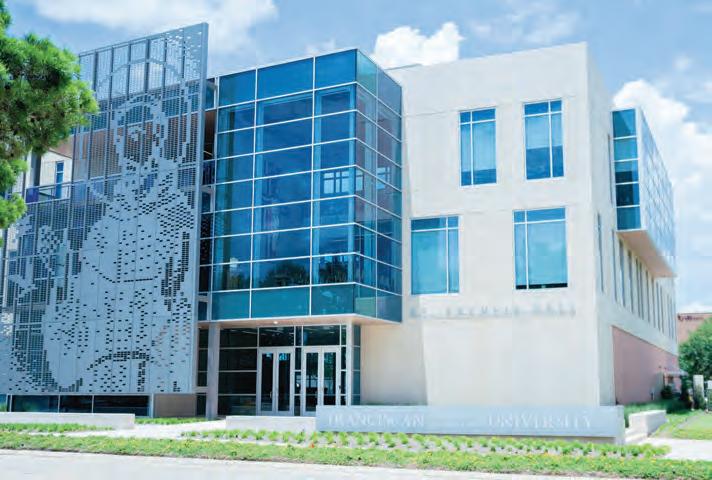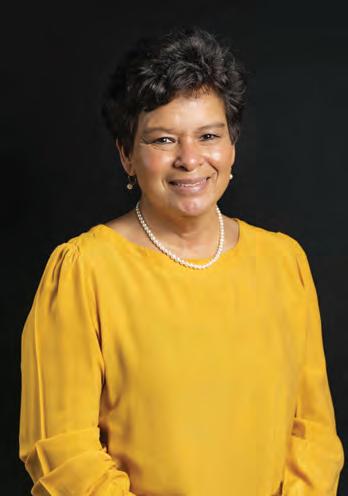
6 minute read
Reflections
From The Publisher
Ispent last weekend building a set of gates for our front porch. Or I tried to. For an untrained amateur with a barnful of cheap tools and a propensity for biting off more than he can chew, the challenge of closing the eight-foot gap between the porch’s central pillars, while also matching railings built by a considerably better carpenter a century ago, has revealed various deficiencies in my handicraft skillset. But there is a reward: for the first time in twenty years we’ll be able to sit on this porch without first needing to kick animal bones out of the way. The goal is to exclude our three dogs, who regard the porch the perfect observation post upon which to lurk until the Amazon delivery man shows up to give meaning to their lives. When he does, they explode down the steps and surround the van bristling, barking, and snorting, while the poor delivery man sits inside trying to decide whether they really mean it. The regular guy knows that this rigmarole is all smoke and mirrors, and dispenses pats on his way to leave packages on the steps. But we can tell when a new driver has been because that package is usually lying in the front yard after having been thrown out of the window. I feel bad about this but assume that for delivery people, dealing with melodramatic dogs is a hazard of the profession.
Our dogs take their sentry duties seriously, which I suppose is a good thing since we live in the exact middle of nowhere. If you’re wondering what kind of heartless dog-hater would want to exclude his staunch defenders from the front porch in the first place, know that our dogs are, usually, revolting. Being country dogs, they divide their summer days between sleeping in dust baths under the house, wallowing in ponds; and making life nasty, brutish, and short for squirrels, chipmunks, possums, raccoons, moles, and any other hapless varmint unfortunate enough to draw their attention. Winter adds mud and deer parts salvaged from the woods behind a nearby hunting camp to this evil-smelling equation. And at the end of the day, can you guess where our dogs most like to retreat to, to relish their conquests and perhaps gnaw on a possum jawbone or something? That’s right: the front porch. Some days we come home and it looks like a cheap slasher film out there. Nothing says “Welcome to our home” like a front porch littered with animal carcasses. It certainly detracts from first impressions of the lovely garden that my wife has labored to create around it. Perhaps it’s a good thing the Amazon delivery man is occasionally frightened to get out of his van.
Were it not for the dogs, this porch could be a lovely place to while away a summer evening. According to my wife’s Aunt Frances, who grew up here with her grandparents, parents, and two sisters during the ‘40s and ‘50s, for decades the front porch was screened—same as the back porch is today. When she was a child, Frances remembers that on long, hot, pre-air- conditioned summer nights, the doors at either end of the house’s central dogtrot hallway were thrown open to the porches. Then the whole family would gather on the front porch to share news, tell stories, play cards, or just sit and rock, while the old house ticked, settled, and cooled behind them, and the cold stars blazed overhead.
There’s something about sitting on a raised porch—with an unobstructed view before you and a sturdy house at your back—that feels right and good. No surprise, then, that there’s an architectural theory to explain what’s going on. Prospect and Refuge Theory holds that some environments simply make us humans feel secure. Chief among these is any place that provides us with an opportunity to observe goings-on (the “prospect” part), without actually being seen ourselves (“refuge”). So it stands to reason that when we’re perched in the deep shade of a porch, surveying our domain and secure in the knowledge that shelter is only a step away, everything seems right with the world. I suppose the dogs have had the right idea all along.
—James Fox-Smith, publisher james@countryroadsmag.com


FranU Rising
With a stunning new building, Franciscan Missionaries of Our Lady University’s commitment to preparing graduates for successful healthcare careers grounded in love, faith, and community, is clearly visible

Summer, 2023, marks a major milestone in the evolution of Baton Rouge’s Franciscan Missionaries of Our Lady University (also known as FranU). In June the university welcomed faculty and students to St. Francis Hall, a soaring, light-filled landmark rising above Baton Rouge’s health district. Which represents the beating heart of the University and a major step in development of a master plan for campus expansion.
Since 2016, under the leadership of university President Dr. Tina Holland, FranU has undergone rapid transformation, evolving from a relatively unknown nursing school attached to Our Lady of the Lake Hospital, into an independent four-year academic institution offering highly-regarded health science and nursing programs delivered with a strong foundation in the liberal arts.

A $28 million, 75,000 square-foot facility, St. Francis Hall represents the first major building project in the hundred-year history of an institution that began on the banks of Capitol Lake. Speaking from her office on the third floor of St. Francis Hall, Holland discussed how FranU’s programs are preparing students for successful careers grounded in Franciscan values. She explained how this approach results in a richer educational experience for students, teachers, and employers.
In the nine years since, she has led FranU through a remarkable transformation, applying lessons learned helping Holy Cross College when at Notre Dame, Indiana, grow from a two-year commuter school into a fouryear residential college.

With St. Francis Hall housing classrooms, common spaces, a library, chapel, and stateof-the-art simulated teaching hospital known as SETH, Holland explained the institution’s commitment to fostering a relationship-based, community learning environment is clearly visible. Over the next decade, the campus master plan will extend FranU’s footprint to a condensed three-block campus focused on students’ professional and personal development. As Holland says, “Gone are the days of indefinite growth in higher education institutions. Our mindset is to be the size and enrollment to meet community needs while preserving our Franciscan ethos.”
Education at FranU Develops in Response to Healthcare’s Evolution

As healthcare has become more technical while demanding greater emphasis on interpersonal skills, FranU’s curricula place emphasis on Catholic bioethics and medical ethics, preparing students to grapple with ethical questions arising from technical healthcare advancements.
To meet this need, FranU educates students for careers in healthcare and high-need care fields, while also providing a liberal arts foundation; and grounding in Franciscan values of service, reverence, love, humility, justice and joyfulness. Under Holland’s leadership, FranU has expanded programs in high-demand allied health fields such as medical lab science, respiratory therapy, physical therapy, and Applied Behavioral Analysis (ABA) therapy, which is used primarily to help patients with autism.
The institution’s community-centered approach carries over into clinical training. FranU partners with local healthcare providers including Our Lady of the Lake, Baton Rouge General Medical Center, Oschner Medical Center, and the Baton Rouge Clinic to help shape curricula and provide vital clinical experience for students. To reduce siloing accompanying specialized medical treatment, the university uses an interdisciplinary approach in its simulation hospital, bringing together various healthcare professionals to solve real-world problems.
Holland believes in viewing education as more than career preparation, seeing the mastery of skills and the formation of character as equally important aspects of personal development. She maintains that the liberal arts have an essential role to play an a well-rounded education. As she says, “If we value and develop human potential, graduates contribute to society in social and moral, as well as economic ways.”
The 1,300-strong student body caters to a wide range of students, including many firstgeneration and Pell Grant-eligible students. While positioned to expand enrollment, Holland insists the focus remain on responsibly meeting community needs and remaining affordable. When planning courses, FranU factors tuition fees against potential earnings to ensure a just student debt burden.
This relationship-based education answers employers wanting professionals able to communicate, lead, and relate well to others. As Holland says, “Healthcare providers invest in our graduates because they’re qualitatively different.”
With St. Francis Hall now fully operational, Dr. Holland explained that plans call for continuing to update FranU’s buildings and consolidating the campus footprint while preserving the institution’s intimate, relationship-based community learning environment. Despite the University’s small size, Holland notes that today, FranU is the largest provider of health care professionals in the Greater Baton Rouge area. “We rely on the community and the community relies on us,” she says.










